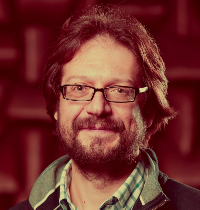
Emiliano Rustighi
|
|
SIEMENS Virtual shaker testing by combining system sub-structures |
|
()
Monday 26 August 2024
Topic Vibration testing is a crucial step in the development of spacecraft as it is used for verifying the reliability of the spacecraft components to the dynamical launch environment. The spacecraft are positioned on a large-scale shaker testing facility, which provides a controlled excitation with the purpose of replicating the in-service structural response. To do so, the shaker is driven by a controller that follows a prescribed profile. Due to the complexity these systems, several issues may arise during the test. Digitalization offers powerful tools to predict the dynamic behaviour ahead of its physical execution. The so-called Virtual Shaker Testing (VST) environment can be built by coupling the controller with a time-domain dynamic model of the system under test (shaker + spacecraft) and it can be run to predict the results of the real test.
Research Activity
Additional information Siemens Industry Software offers accommodation for the agreed period, company desktop/laptop, and required software. |


